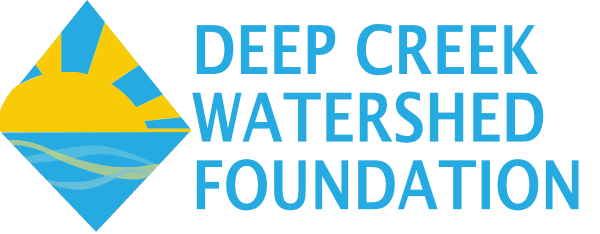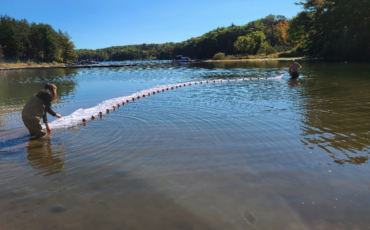Install and Maintain Water Levels & Temperature Gauges
The installation was completed in August 2020 at the cost of about $6,000, and an annual maintenance cost of about $9,000 since then. The United States Geologic Survey has installed and maintained the gauges and is paid for by the Foundation. The data from these gauges are available on our website and on the USGS website. These projects are in partial fulfillment of Goal 1 of the Watershed Management Plan.

The water level and temperature gauges require regular calibration and routine maintenance. The water level gauge initially encountered difficulty dealing with ice formation in the initial location. The gauge was quickly reinstalled with no problems getting measurements since.
The water level data on the USGS shows both elevations based on geodetic basis and on the lake basis. The lake basis assumes that the elevation of the overflow weir at the dam is at elevation 2462. The geodetic elevation is 1.82 feet higher than the lake elevation.
Eric Null, the Lake Manager, has noted the utility of continuous temperature monitoring for our Eutrophic lake: “There are three basic types of lakes, Dystrophic, Eutrophic, and Oligotrophic. Dystrophic lakes have no oxygen, while Eutrophic lakes have their greatest amounts of oxygen at the surface. Oxygen then decreases as you increase depth. Oligotrophic Lakes have evenly distributed oxygen. Oligotrophic lakes do not turn over seasonally, therefore, have a very low nutrient concentration (infertile). Eutrophic lakes turnover seasonally due to their stratification of oxygen, temperature, and nutrients.
This turnover is essential for life in a Eutrophic lake. Every spring as the temperature rises and warms the water’s surface to the temperature of the bottom of the lake (lakes can stay 40+ degrees on the bottom during winter), the wind mixes the surface with the deeper water, the wind continues to mix the water until the top layer of water slides beneath the bottom layer. The bottom becomes the top and brings all of the nutrients that fell to the bottom (dead organic matter) to the surface of the lake where they can be processed by biological organisms. In fall, the same event happens in reverse. As the surface water cools, it becomes denser and pushes the warmer bottom water to the surface with all of the summer nutrients. These events cause cloudy water that can be tinted green. The cloudiness is nutrients and the green are phytoplankton, the beginning of the lake’s food chain.
These nutrients fuel life in the lake through the winter and the summer. Without the natural turnover phenomenon, a Eutrophic or Mesotrophic (a high-quality eutrophic lake) lake could not sustain life. Temperature is vital for fishing, especially during turnover. During turnover, the surface’s temperature, nutrient, and oxygen concentration change dramatically for a week or two, forcing fish to the bottom of a lake and suppressing their appetites. Also, temperature dictates
where certain fish species will be feeding in a lake. Temperature stratification of a lake in summer is the key factor to fishing success.

